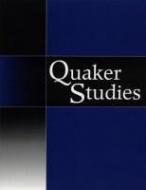
Abstract
The post-Restoration period saw the development of the Society of Friends from an ill-defined religious group to a well-ordered denomination. This process of institutionalisation was marked by struggle between Friends' traditional emphasis upon the freedom of the light within to guide the individual and the need to impose some order upon the Society. The process saw perceived innovations develop into accepted traditions and is most clearly demonstrated by the Quaker controversies of this period. The 'Hat Controversy' of the 1660s shows early resistance to the innovation of some Friends exerting their authority over the consciences of others. Although this controversy caused much upset at the time, discord was on a smaller scale than in subsequent divisions. This may indicate that the issue of authority was not as major a concern among Friends in the 1660s as it would later become. The attempted introduction of uniformity of practice through the system of business meetings led to the Wilkinson-Story Controversy of the 1670s and 1680s. This was more serious conflict between the traditional authority of the light and the imposed authority of Fox and others, resulting in schism. By contrast, controversy resulted in the 1690s from George Keith's attempts to introduce uniformity of belief. His disownment and lack of success demonstrates that this was too great an innovation to be tolerated by the majority of Friends.
Recommended Citation
Martin, Clare J. L.
(2003)
"Tradition Versus Innovation: The Hat, Wilkinson-Story and Keithian Controversies,"
Quaker Studies: Vol. 8:
Iss.
1, Article 1.
Available at:
https://digitalcommons.georgefox.edu/quakerstudies/vol8/iss1/1
